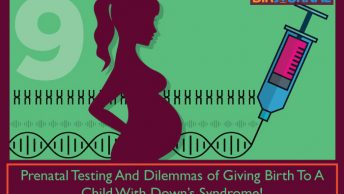Here are two of the most dreaded diseases that nobody would want happening to them or their loved ones. It helps to understand them better in order to deal with them more efficiently.
Aids
Acquired Immune Deficiency Syndrome (AIDS) is a disease that you can get infected with because of a weakness in the body’s immune system that fights diseases. AIDS is caused by a virus called Human Immunodeficiency Virus (HIV).
When a person acquires HIV, the body naturally makes “antibodies,” which are special molecules, to fight this infection. The detection of HIV in a person is done by a blood test which looks for these antibodies. If antibodies are found in the person’s blood, it means the person has HIV infection. People with HIV antibodies are called “HIV-positive,”
It is a misconception that people who are HIV-positive all have AIDS. Hundreds of people who are HIV-positive do not get sick for years. As this HIV-infection progresses, it slowly collapses the body’s immune system. When this happens, all the viruses, fungi, bacteria and parasites that usually are harmless to normal people, make people sick, causing “opportunistic infections.”
How does one get AIDS
Nobody “gets” AIDS. They get an HIV infection which later develops into AIDS. The problem with HIV is that it is infectious and people can easily get infected from other people who don’t look sick and many of them may not even have been tested for HIV. The blood, semen, vaginal fluid and breast milk of HIV infected people infects others because of the presence of virus in it.
HIV virus is passed through:
• Sex with an HIV infected person
• Deep kissing if there are bleeding gums or open sores in the mouth
• Sharing a needle (like injecting drugs) with an infected person
• Being born to as well as drinking the breast milk of an HIV infected mother
• Blood transfusion (which was previously the main cause of HIV infections, but no longer the problem as blood goes through a strict screening procedure).
Myth
One common myth is that touching an HIV-infected person causes infection – this is completely wrong. Researchers also say that HIV is not transmitted through tears or saliva.
Identification of a person with HIV Infection
It may not be possible to know when one is infected by HIV. The symptoms differ; while some people suffer from headaches, sore joints and muscles, fever, swollen lymph glands, or even a skin rash for a couple of weeks; others show no symptoms whatsoever. Even in the case of people experiencing these symptoms, they are usually passed off as flu.
How the HIV virus develops
The virus multiplies in the body for weeks or months before the immune system starts responding. A person will not test positive before the immune system responds to the virus by creating antibodies. The bad news is that the person can still infect others during this period. So, what happens is that people don’t know they have HIV infection and even tests don’t show positive, but all the time they are infecting other people close to them. Many people stay healthy for even as long as ten years after the first appearance of symptoms; however, slowly but surely the immune system is damaged over the years. The damage to the immune system is measured by the CD4 cell count and HIV infection turns into AIDS when the immune system is seriously damaged. A healthy individual has between 500 and 1500 CD4 cells in a milliliter of blood. A person who has less than 200 CD4 cells or less than 14% CD4 percentage may have AIDS. Opportunistic infections are also found; such as pneumocystis pneumonia (PCP) which is a lung cancer; Kaposi’s sarcoma (KS) a skin cancer; cytomegalovirus (CMV) an infection that affects the eyes; candida a fungal infection that causes thrush.
Treatments and Cure
In the 1990s, AIDs was a leading cause of death in the United States. However, new treatments have brought down the death rate by a huge margin. There is no cure for AIDS even today. There are certain drugs that slow down the virus and the damage to the immune system. There is still no way that HIV can be cleared completely from the body.
There are drugs such as ARVs that help reduce the rate of opportunistic infections; however, some infections are still difficult to treat.
Cancer – A disease that still scares people
There are 200 different types of cancer and it may be lurking within a body and the body may not even know. A minor ache that is usually ignored may be the begetter of this lethal disease. It shrouds itself until the time comes to reveal itself – many a time a little too late. All the time when it is quiet, the cancer cells are multiplying and spreading within the body. It can affect any organ of the body. The cancer cell continues to divide and abnormally multiply until it develops into a lump or tumor, which can either be malignant or benign.
Malignant or Benign
A benign tumor does not spread or metastasize to other parts of the body and is not cancerous. They can mostly be removed and may not pose a threat. However, if it is malignant, it spreads and can metastasize to different parts of the body through the blood lymph system.
The effect of cancer can be bad but the advances in clinical research, cancer treatments and alternative treatments make it less dreaded than it was previously. However, it still kills one out of every four Americans and is surpassed only by heart disease as the leading cause of death. If lung cancer spreads to the brain, it is called metastatic lung cancer.
Different Types of Cancer
Skin: Malignant melanoma and skin cancer.
Blood and Lymphatic System: Hodgkin’s disease, leukemias, lymphomas, Waldenstrom’s disease and multiple myeloma.
Digestive System: Esophageal cancer, pancreas cancer, liver cancer, pancreas cancer, colon cancer, rectal cancer and anal cancer.
Urinary System: Bladder cancer, kidney cancer, prostate cancer, testis cancer and prostate cancer.
Cancers in women: Breast cancer, ovarian cancer, choriocarcinoma and gynecological cancers.
Then there are the bone tumors, brain tumors, nasopharyngeal cancer, retroperitoneal sarcomas, carcinoid tumor, head and neck cancer, thyroid cancer, soft tissue tumor and cancers for which the primary site is not known.
The most common types of cancers are breast cancer, colon cancer, lung cancer and Prostate cancer.
Cancer Treatments
Traditional treatments include – radiation, chemotherapy, surgery, hormone therapy and immunotherapy. All of these therapies have been found to be safe and effective, although they are associated with unpleasant side effects. Depending on the type of cancer, these treatments are used in combination or individually and control the growth of cancer cells or eliminate the disease completely.
The treatment procedures may be detrimental to the emotional well-being of the patient and this is where alternative therapies, such as acupuncture, aromatherapy, medication, massage, homeopathy, herbal products etc. help. These therapies are aimed at preventing illness, reducing or preventing side effects, reducing stress and control or even cure some cancers.
Some traditional therapies like ayurveda are also known to cure different types of cancer. Although, the successful use of these therapies for a complete cure is under study, they have several supporters who believe they provide a positive aspect to their treatment and care, helping them cope better with the distressing physical and emotional side effects of cancer.
In this day and age, with all the advancement in science, there still are a few diseases that are scary and dreaded. Some of the others are Alzheimer’s, Hansen’s disease (Leprosy), tuberculosis etc. This dread-factor arises from the fact that these diseases either do not have a cure or have several life-long problems associated with them.













